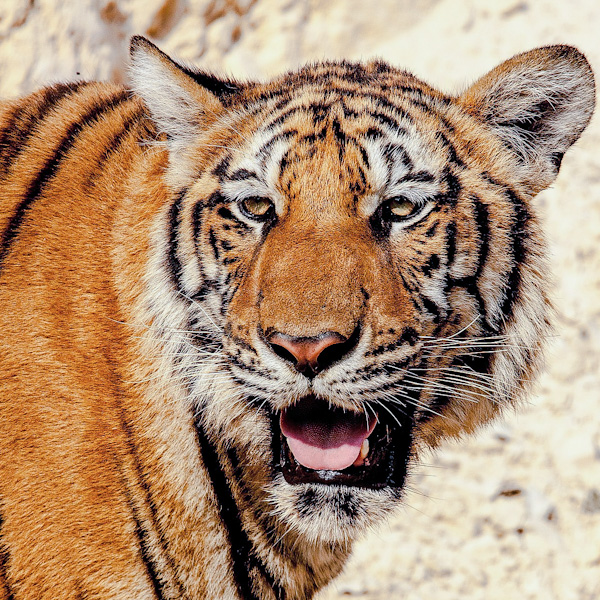Is the tiger the largest hunter of any kind to stalk the earth?
Yes, the tiger is the largest hunter of any kind to stalk the earth today. And of all the tiger species, the largest is the Siberian because they have evolved in the cold Far East of Russia where size matters in order to maintain body temperature.
The tiger is the largest member of the cat family, and its immense power enables it to kill almost any kind of hooved animal up to large wild cattle.
When hunting the final dash has to be relatively short because of the tiger's immense weight. The tiger can maintain top speed for around 30 metres.
It delivers a massive blow with its front paw to knock the animal down except for the very large prey animals.
Once down the tiger grabs the animal in its front claws and suffocates it with a neck bite.
The killing process is quick, but the tiger will maintain its bite to the throat for several minutes after the animal has died.
Then it drags the carcass to a safe place to devour it. The immense strength of the tiger is seen once again in this process as the tiger is able to drag weights of up to over 500 pounds (230 kilograms).
The tiger will gulp down as much as 66 pounds (30 kg) of flesh at one sitting.
The tiger may remain with the carcass and restart eating when hungry or it may cache the prey animal with leaves and undergrowth and return.
Research indicates that male tigers successfully catching prey animals in one out of twenty attempts (5% of the time according to Dr Morris, the British zoologist). He referred to the work of US field biologist George Schaller observing tiger hunting in Kanha National Park in India.






Comments
Post a Comment
Please comment.